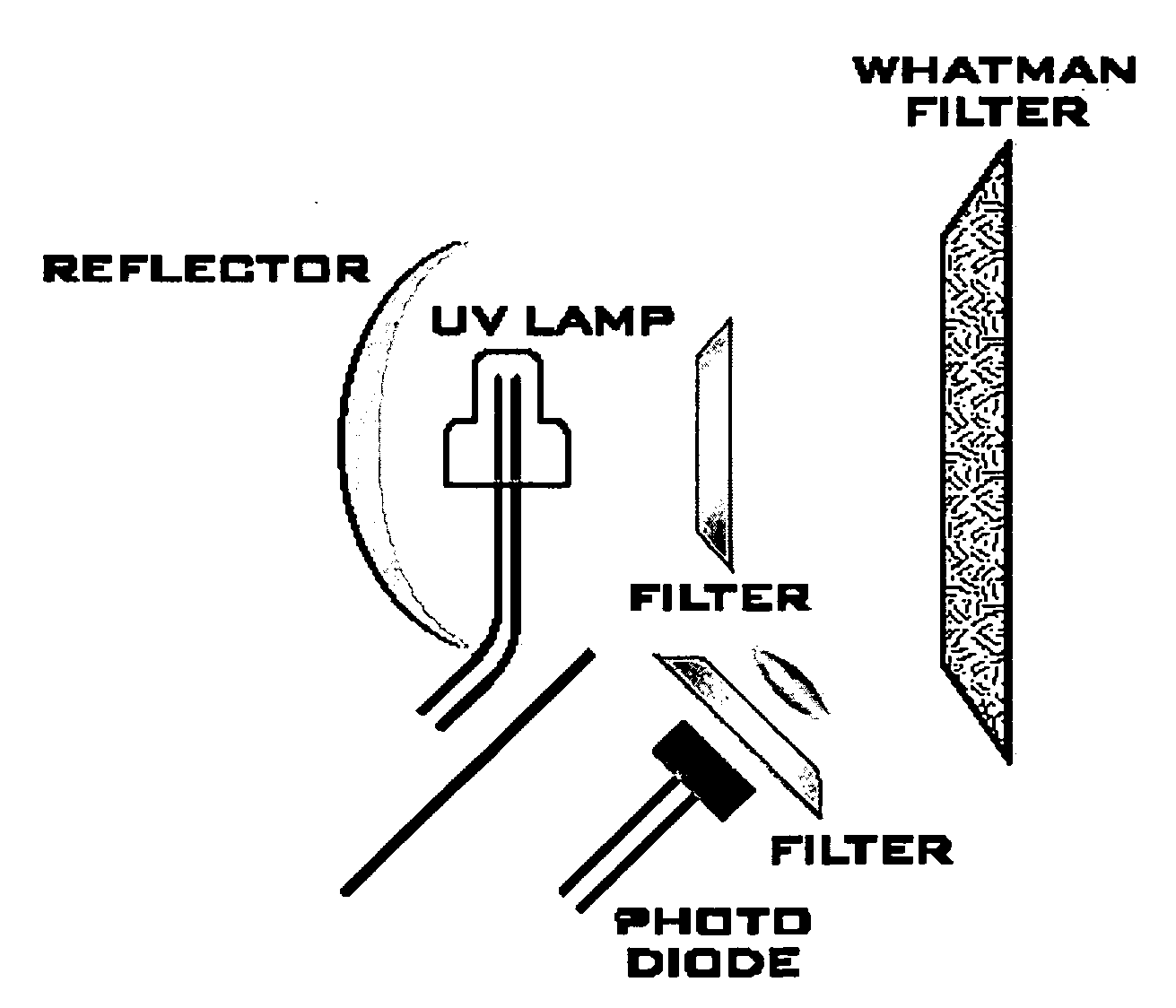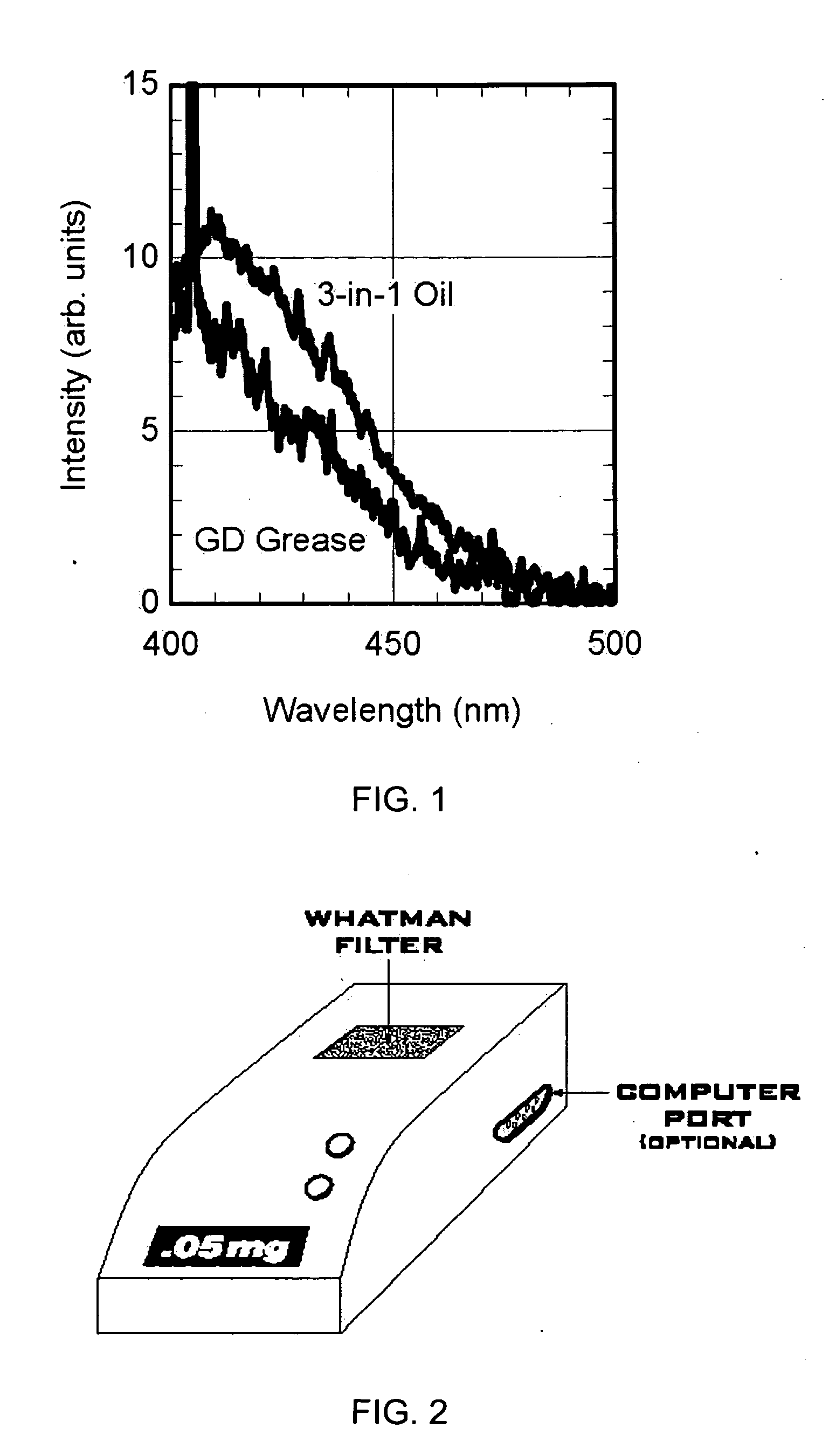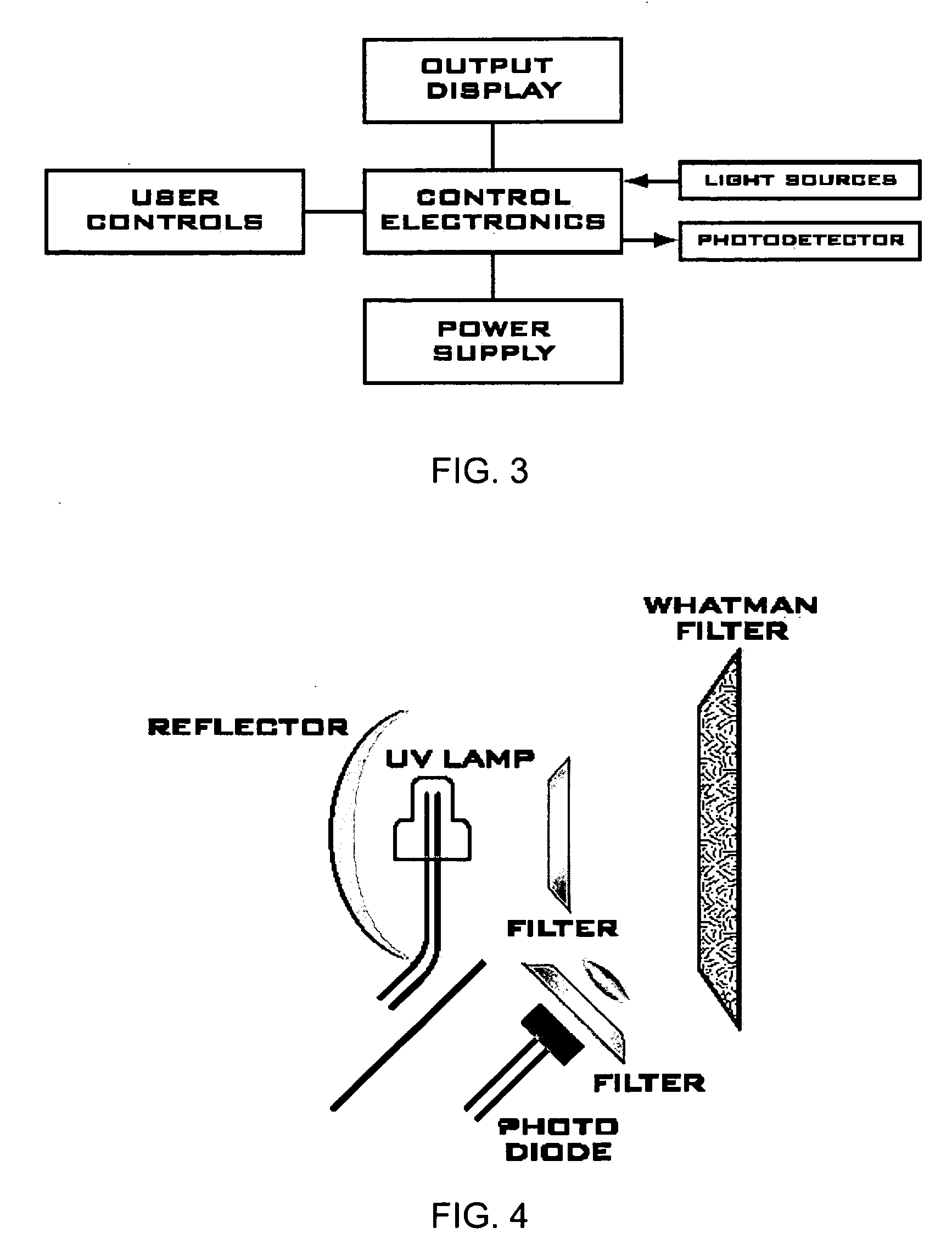Device and method for quantifying a surface's cleanliness
- Summary
- Abstract
- Description
- Claims
- Application Information
AI Technical Summary
Problems solved by technology
Method used
Image
Examples
Embodiment Construction
[0030]Definitions and Overview
[0031]Before describing the invention in detail, it must be noted that, as used in this specification and the appended claims, the singular forms “a,”“an,” and “the” include plural referents unless the context clearly dictates otherwise. Thus, for example, reference to “a contaminant” includes one or more contaminants, reference to “a parameter relevant to bondability” includes a single parameter relevant to bondability as well as a collection of parameters relevant to bondability, reference to “a wavelength” includes a single wavelength as well as a range of wavelengths, and the like.
[0032]In describing and claiming the present invention, the following terminology will be used in accordance with the definitions set out below.
[0033]The term “black light” as used herein refers to radiation invisible to the naked human eye, typically of ultraviolet (UV) or infrared (IR) wavelengths, that causes fluorescent materials to emit radiation of a different wavele...
PUM
| Property | Measurement | Unit |
|---|---|---|
| Wavelength | aaaaa | aaaaa |
| Concentration | aaaaa | aaaaa |
| Surface area | aaaaa | aaaaa |
Abstract
Description
Claims
Application Information
 Login to View More
Login to View More - R&D
- Intellectual Property
- Life Sciences
- Materials
- Tech Scout
- Unparalleled Data Quality
- Higher Quality Content
- 60% Fewer Hallucinations
Browse by: Latest US Patents, China's latest patents, Technical Efficacy Thesaurus, Application Domain, Technology Topic, Popular Technical Reports.
© 2025 PatSnap. All rights reserved.Legal|Privacy policy|Modern Slavery Act Transparency Statement|Sitemap|About US| Contact US: help@patsnap.com



